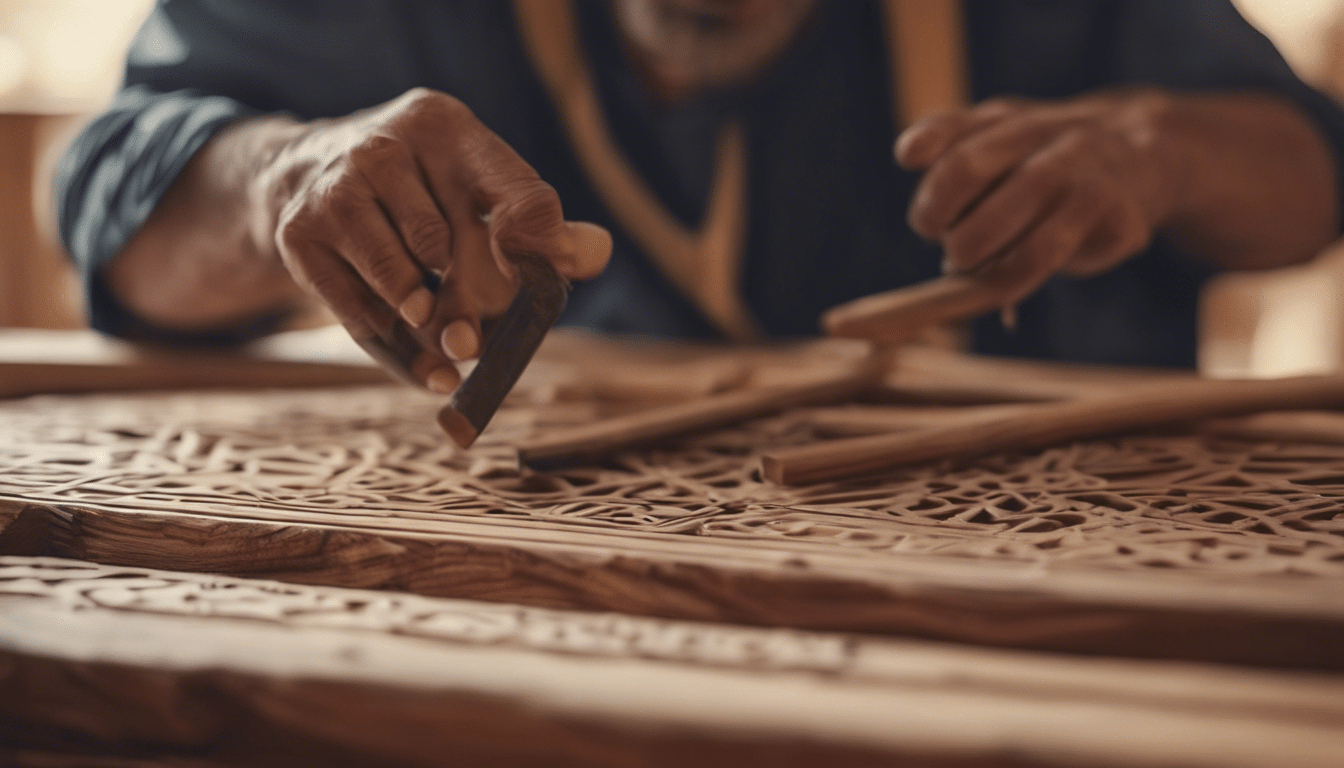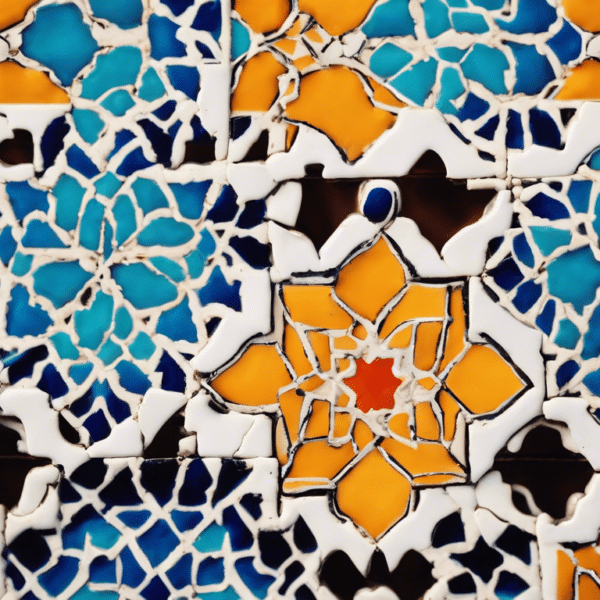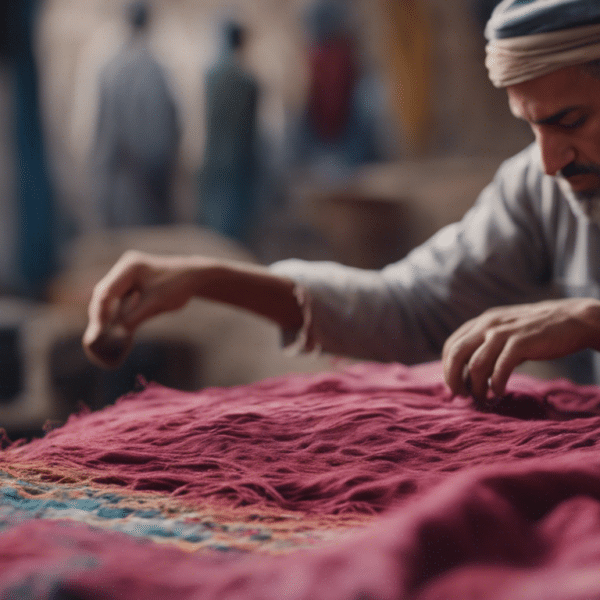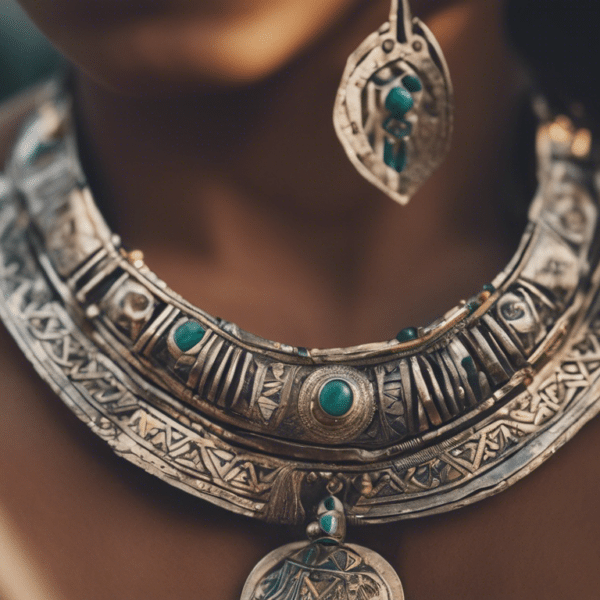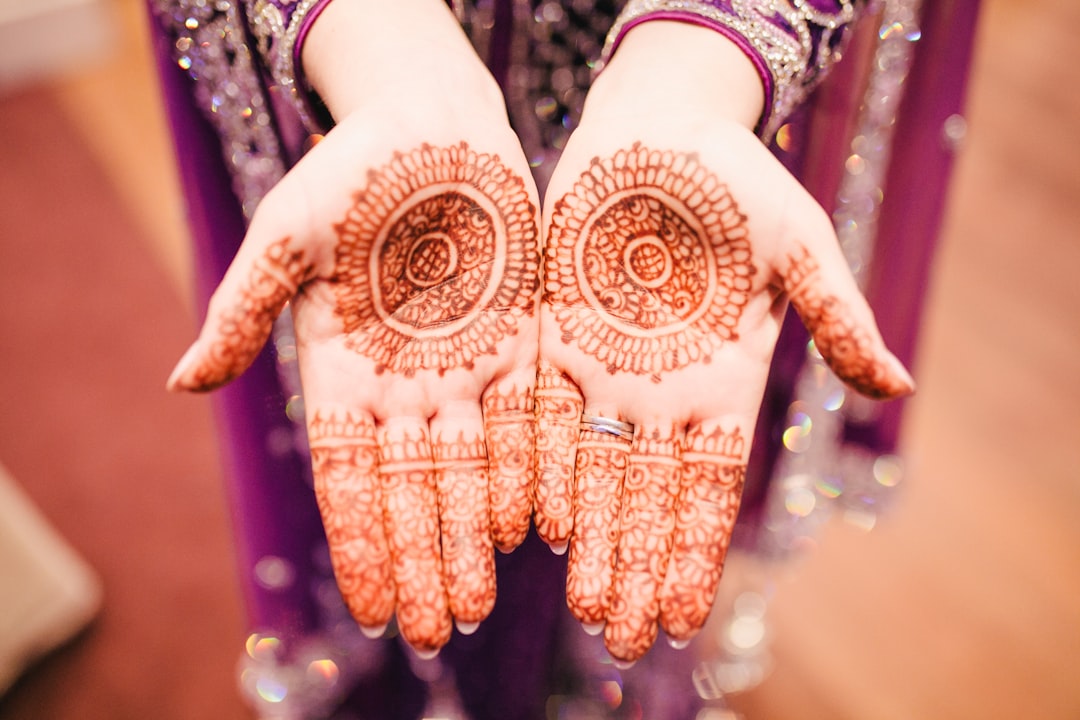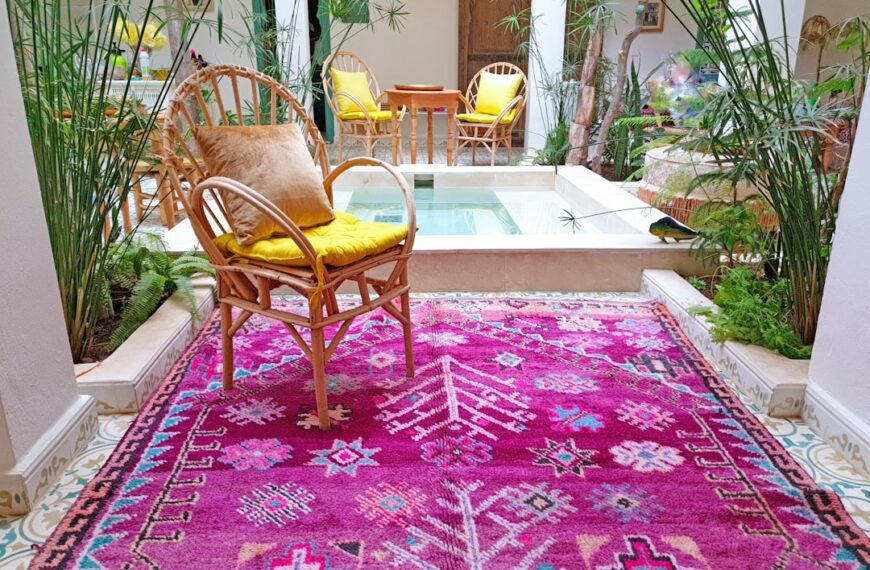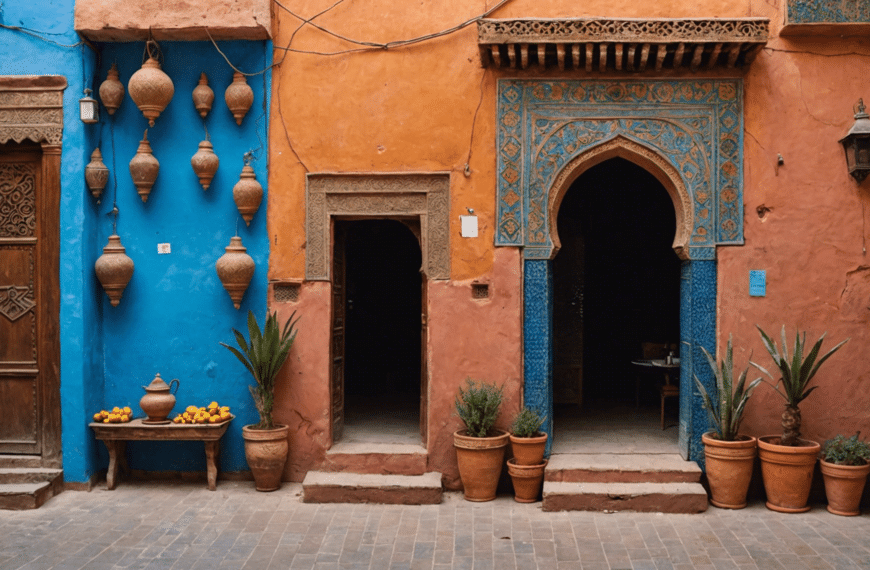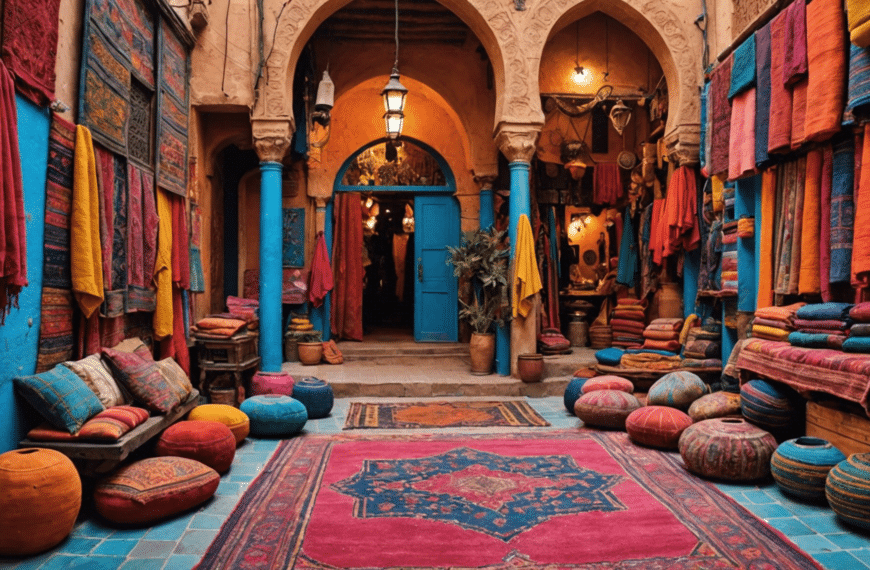Beneath the sun-kissed skies of Morocco lies an age-old artisanal heartbeat, one that thumps resoundingly through its intricately carved cedar doors and hand-joined geometric patterns. It whispers tales of a craft so enriched with history it beckons the soul to listen. Moroccan woodwork and carpentry are not mere professions; they are the reverberating echoes of ancestral wisdom, the delicate dance of blade and wood, and the love letters written by craftsmen to their land. In the following lines, we shall trace the delicate sawdust back to its roots, uncovering the origins of a tradition as old as the Atlas Mountains, whose secrets are held tightly within the grains of each carefully chiselled masterpiece. Join me on this voyage through time, where every chip and chisel unravels a piece of Morocco’s heart, shaped lovingly by the hands of its people.
The historical roots of Moroccan woodwork
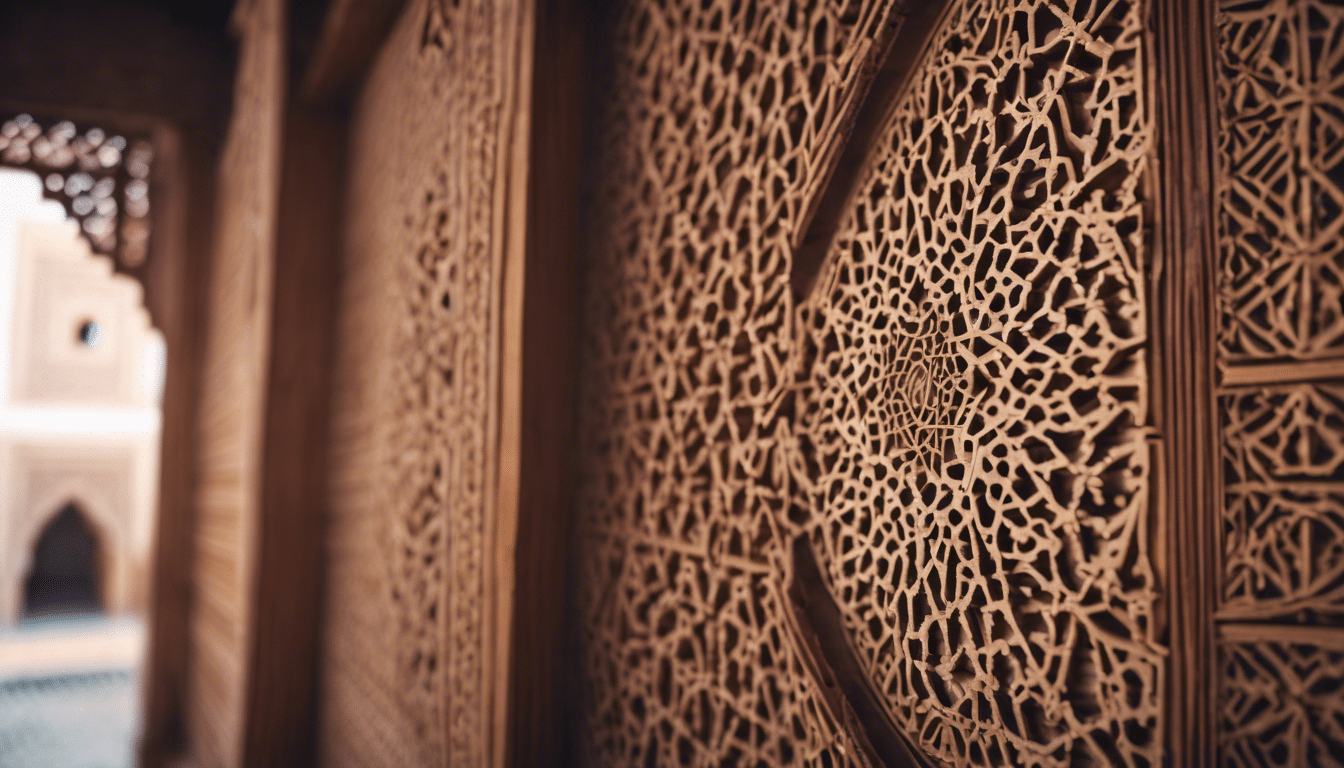
As one meanders through the labyrinthine souks of Marrakech, the senses are tantalized by an array of sights, sounds, and scents. Amongst the most alluring are the intricate patterns and warm hues of Moroccan woodwork, a craft deeply rooted in the sands of time. The historical tapestry of Moroccan woodwork is embroidered with tales of trade, religion, and cultural exchange, its threads stretching back to ancient civilizations.
Moroccan woodwork, known as Zouak, is a testament to the skilled artisans who have perfected their craft over generations. These talented individuals harness the natural beauty of wood, breathing into it a life of elaborate designs and motifs that reflect the nation’s multifaceted heritage.
The origins of this craft can be traced to the early days of the Moors, whose geometric patterns and arabesques echo the influence of Islamic art. It is believed this intricate style burgeoned during the reign of the Moorish dynasties, especially when the splendor of Islamic art and architecture flourished in the palatial settings of Al-Andalus (modern-day Spain and Portugal). Post the reconquest, many Moorish artisans found refuge in Morocco, seeding their profound impact on the country’s artistic landscape.
Woodworking in Morocco also draws from the country’s geographic location, which poised it as a nexus for cultural exchanges between Europe, Africa, and the Middle East. This intercontinental blend is visibly etched in the woodwork detailing seen across monuments, sacred spaces, and everyday items. The Berber tribes, native to North Africa, also contributed their own motifs and symbology, further enriching the diversity of this craft.
The artistry in Moroccan woodwork is not purely aesthetic; it serves as a narrative of Morocco’s history. During historical periods of prosperity, such as under the rule of the Saadian and Almoravid dynasties, there was a significant emphasis on cultural development, which included the patronage of woodworking. Consequently, the growth in majestic constructions like mosques and madrasas provided a canvas for woodwork to be showcased on a grandiose scale.
Traditional Moroccan woodwork is characterized by key elements that highlight the craftsmanship’s evolution through the ages. Cedarwood, native to the Atlas Mountains, is frequently employed due to its durability and aromatic quality. Artisans also employ various techniques such as carving, painting, and inlay to create distinct pieces, each telling a story of its own.
Techniques in Moroccan Woodwork
– Carving intricate geometric patterns, floral designs, and calligraphy into wood
– Implementing marquetry, in which pieces of wood are inlaid into a base to form decorative patterns
– Painting wood with vibrant colors, a technique often seen in decorative panels and furniture
– Using delicate wood-turning methods to create complex shapes for various objects
Within the stones of centuries-old Moroccan architecture, one can witness the splendor of this art form in elements such as:
– Ornate doors and window frames that serve as gateways to another time
– Exquisite ceiling panels that narrate celestial tales
– Prayer niches, known as mihrabs, which blend spirituality with artistry
– Carved lattice work, or musharabieh, that offers both privacy and ornamental beauty
To appreciate the true essence of Moroccan woodwork is to understand the fusion of function, form, and spirituality that it encapsulates. It is less a profession and more a cultural expression, an artistic dialogue passed down through time, from the fragrant cedar forests of the Atlas to the bustling workbenches of Marrakech’s master craftsmen.
In a modern context, Moroccan woodwork continues to thrive, not only as a historical artifact but as a functional art form beloved by connoisseurs around the world. It adorns contemporary homes, reminding us of an ancestral wisdom that speaks of beauty, durability, and an unbreakable connection to the past. Each piece, be it a simple chessboard or a monumental ceiling, carries within it the whispered stories of generations and the indelible mark of Morocco’s rich cultural heritage.
Influences from Moorish and Andalusian craftsmen
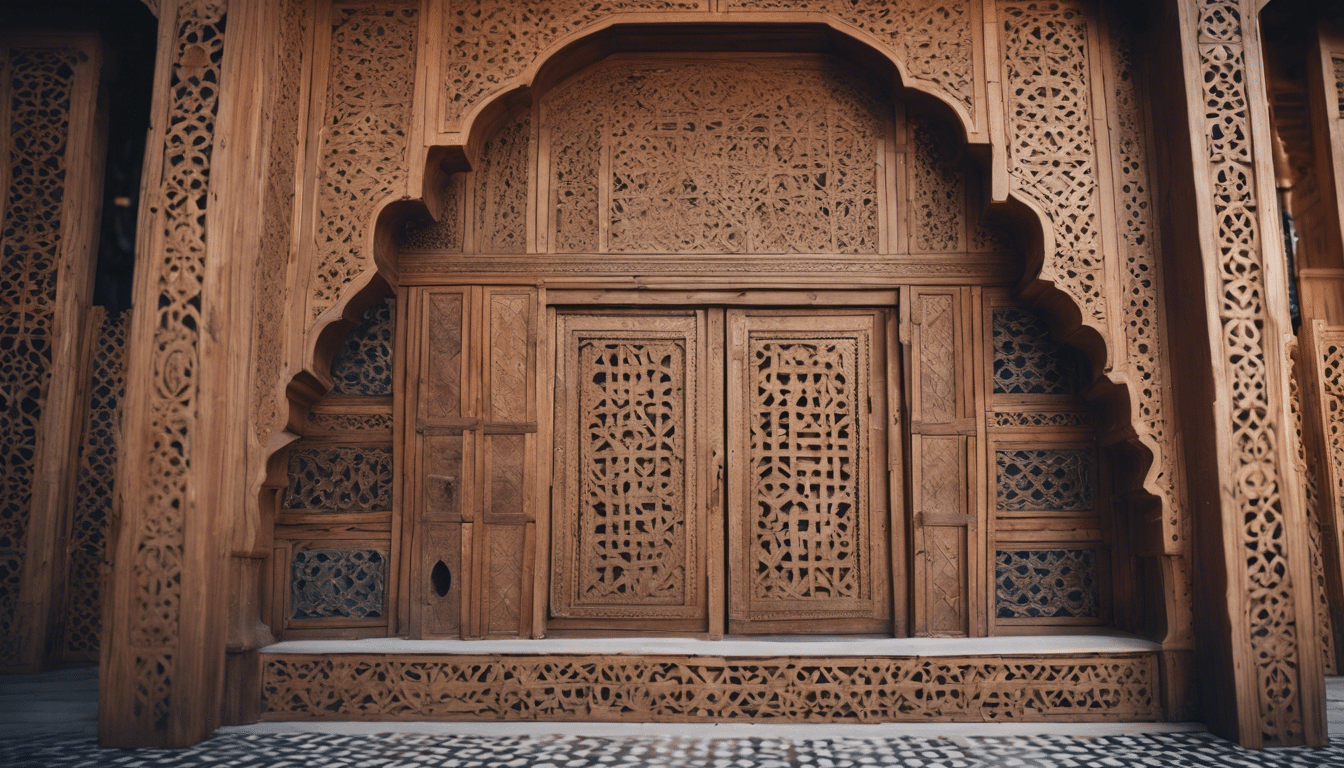
In the heart of Morocco, an age-old tradition breathes vibrant life into every carved door and inlaid table – it is the cherished craft of Moroccan woodwork. Long been admired for its detailed precision and beauty, this craft is a harmonious blend of influences, particularly from Moorish and Andalusian craftsmen whose legacies are intertwined with Moroccan culture.
The Moroccan craft of woodwork, recognized for its intricate designs and fine craftsmanship, encapsulates centuries of cultural exchange and artistry. To fully appreciate the richness of Moroccan woodwork, one must delve into its historical influences and understand how it became such an integral part of Morocco’s artistic heritage.
Moorish Mastery in Wood
Moorish influence on Moroccan woodwork can be traced to the time when the Moors, a Muslim people from North Africa and the Iberian Peninsula, brought with them a heightened sense of art and aesthetics. Their expertise in geometrical patterns and intricate motifs quickly became a mainstay in Moroccan woodcarving.
These Moorish patterns are not merely aesthetic; they carry cultural and spiritual significance. The use of geometrical shapes is more than just a decorative choice – it’s rooted in Islamic principles which abstain from the depiction of living forms. The result? A rich tapestry of mathematical precision and abstract beauty that gives Moroccan woodwork its distinct identity.
Andalusian Artistry Interwoven
Meanwhile, the Andalusian craftsmen infused Moroccan woodwork with their unique regional flair. Influences from the Andalusia region of Spain, known for its lush gardens and opulent architecture, are evident in the fluidity of the designs and the incorporation of nature-inspired motifs.
Andalusian craftsmen were renowned for their skill in ‘taracea’, a meticulous inlay technique. This art form, which involves embedding pieces of different materials into wood to create elaborate designs, was eagerly adopted and adapted by Moroccan woodworkers. It adds a layer of texture and color that enchants any observer, creating pieces that are as much a feast for the eyes as they are a testament to the artisan’s skill.
The collaboration between Moorish and Andalusian styles has fostered a distinct Moroccan woodwork tradition. It’s characterized by:
– A celebration of geometric patterns
– Delicate floral and arabesque motifs
– The intricate technique of taracea
– The use of cedar wood, known for its durability and scent
A Legacy of Inherited Craftsmanship
The legacy of Moorish and Andalusian influence is evident in Morocco’s medinas and palaces. The grandiose doors of the Royal Palace of Fez or the delicate carvings that adorn the interiors of Marrakech riads speak volumes of this inherited craftsmanship.
In today’s Morocco, this tradition is not only preserved but is thriving. Artisans spend countless hours crafting and carving, ensuring that each piece, from the grand doors of a mosque to the delicate frame of a mirror, tells the story of a culture that has been fostered by a diverse historical palette.
Cultural Significance and Modern-Day Appreciation
It’s this blend of history and art that draws enthusiasts from around the world. For those with an appreciation for woodwork and a keen interest in cultural expressions, Moroccan pieces are more than mere items of furniture; they are artifacts of a rich, evolving story.
The appreciation for Moroccan woodwork extends beyond aesthetics, seeping into the realm of sustainable and ethical craftsmanship. With a rising global consciousness about the sources and methods of production, the traditional Moroccan woodwork, with its reliance on hand skills and local materials, stands out as a beacon of ecological and cultural preservation.
The Art of Wood in Modern Moroccan Life
Amidst the bustling streets of Moroccan souks, the artisan’s touch is palpable. The workshops ring with the sound of chiseling and the scent of freshly carved cedar. In these spaces, the dance between history and modernity continues, as craftsmen and women draw upon ancient techniques to create works that speak to the contemporary heart.
In the end, the story of Moroccan woodwork is one of continuity and adaptation – an art form deeply rooted in its Moorish and Andalusian origins yet ever-evolving. It stands as a living testament to the fusion of cultures and the timeless beauty of craftsmanship that has transcended generations and continues to inspire awe and admiration around the globe.
Traditional techniques in Moroccan carpentry
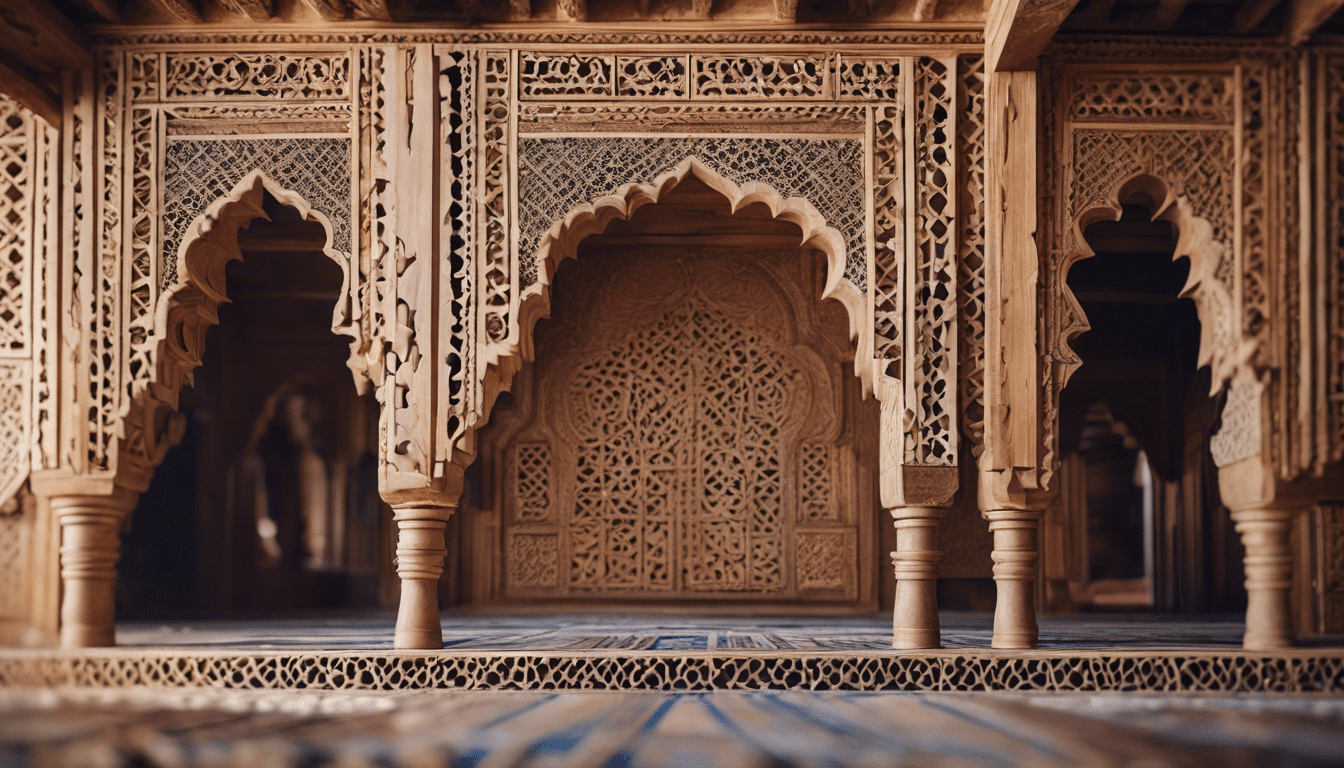
As the gentle hum of the souk envelops the senses, one cannot help but be drawn to the scent of cedarwood mingling with the buzz of artisans hard at work. This is the essence of Moroccan woodwork: a timeless craft steeped in tradition and skilled artistry.
In the heart of Morocco, traditional carpentry is not merely a means of crafting furniture; it transcends into a form of cultural expression. With each chisel stroke and delicate inlay, carpenters weave a story of heritage and craftsmanship honed through generations.
Moroccan carpentry has always been a blend of various cultural influences, including Islamic and Andalusian patterns. The unique characteristics of this woodwork are found in the intricate geometric patterns and floral designs that are meticulously hand-carved into wood. One of the most distinguished elements is the moucharabieh, an ornate lattice work used in windows and room dividers, offering both privacy and ventilation while exuding an exotic charm.
The Maghreb’s skilled carpenters are known to use a variety of woods in their work, such as cedar from the Middle Atlas, walnut, lemon, or even thuya wood, depending on the region and the specificity of the piece being crafted. Each wood type brings its own color, texture, and fragrance to the final work, making every piece a unique gem.
The stages of Moroccan carpentry are as varied as the designs themselves. Starting with the meticulous selection of wood, renowned for its durability and resistance to decay, artisans then move on to cutting and assembling the basic structure of the furniture. But it is in the intricate detailing that the true essence of Moroccan woodwork comes to life.
Carving is a task of precision and patience, where centennial motifs are brought to life. The tools are simple, yet the hand that wields them must be steady and experienced. Moroccan artisans are revered for their ability to create complex patterns using nothing more than chisels and mallets. Following this, marquetry, the art of creating images and patterns using veneers of different woods, often colored, is applied with a deft hand.
Finally, the finishing touches are applied – a process which can range from oiling and waxing to paint or varnish, depending on the desired look and the piece’s intended use. Some artisans go further, applying mother of pearl or metal inlays, a testament to their dexterity and the fusion of materials that make Moroccan carpentry not just furniture-making, but an art form.
In Morocco, traditional techniques in carpentry are not only about preserving the past; they are about sustaining a future. Through workshops and apprenticeships, young artisans are taught the ways of old, ensuring that these time-honored methods continue to thrive. Visitors are often entranced by the chance to witness these craftsmen at work, sometimes even participating in the creation of a simple piece under the watchful eye of the maalem, the master craftsman.
To those who wander through the streets of Marrakech or Fez, the presence of Moroccan woodwork is a constant companion. From intricately carved doors to ornately decorated chests, the testament of a rich cultural heritage lives in every grain of wood and in the heart of every chisel’s imprint. It’s in these details that the spirit of Moroccan tradition breathes, inviting us to a world where every piece tells its own majestic story.

